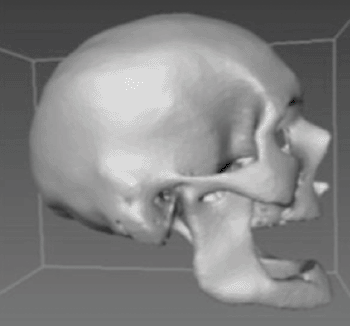CT Scans Could Bolster Forensic Database to Identify Unknown Remains
By MedImaging International staff writers
Posted on 30 Jan 2014
New findings revealed that data from computed tomography (CT) scans can be incorporated into a growing forensic database to help determine the ancestry and sex of unidentified human remains. These findings may also have clinical applications for craniofacial surgeons.Posted on 30 Jan 2014
“As forensic anthropologists, we can map specific coordinates on a skull and use software that we developed—called 3D-ID—to compare those three-dimensional coordinates with a database of biological characteristics,” said Dr. Ann Ross, a professor of anthropology at North Carolina State University (NC State; Raleigh, USA) and senior author of an article describing the research, published January 2014 issue of the Journal of Craniofacial Surgery. “That comparison can tell us the ancestry and sex of unidentified remains using only the skull, which is particularly valuable when dealing with incomplete skeletal remains.”

Image: Cranium image reconstructed from CT scans (Photo courtesy of the North Carolina State University).
The 3D-ID database’s size, however, has been limited by the researchers’ access to modern skulls that have plainly recorded demographic histories. To develop a stronger database, Dr. Ross and her coworkers initiated a study to determine whether it was possible to get good skull coordinate data from living people by examining CT scans. The University of Pennsylvania Museum’s Morton Collection (Philadelphia, PA, USA) provided the NC State investigators with CT scans of 48 skulls. Researchers mapped the coordinates of the actual skulls by hand utilizing a digitizer (electronic stylus). Then they compared the data from the CT scans with the data from the manual mapping of the skulls.
The researchers discovered that eight bilateral coordinates on the skull were consistent for both the CT scans and manual mapping. “This will allow us to significantly expand the 3D-ID database,” Dr. Ross said. “And these bilateral coordinates give important clues to ancestry, because they include cheekbones and other facial characteristics.”
With the five midline coordinates, however, the researchers demonstrated inconsistencies between the CT scans and manual mapping. “More research is needed to determine what causes these inconsistencies, and whether we’ll be able to retrieve accurate midline data from CT scans,” stated Amanda Hale, a former master’s student at NC State, and lead author of the study.
This research may also help craniofacial surgeons. “An improved understanding of the flaws in how CT scans map skull features could help surgeons more accurately map landmarks for reconstructive surgery,” Dr. Hale emphasized.
Related Links:
North Carolina State University














